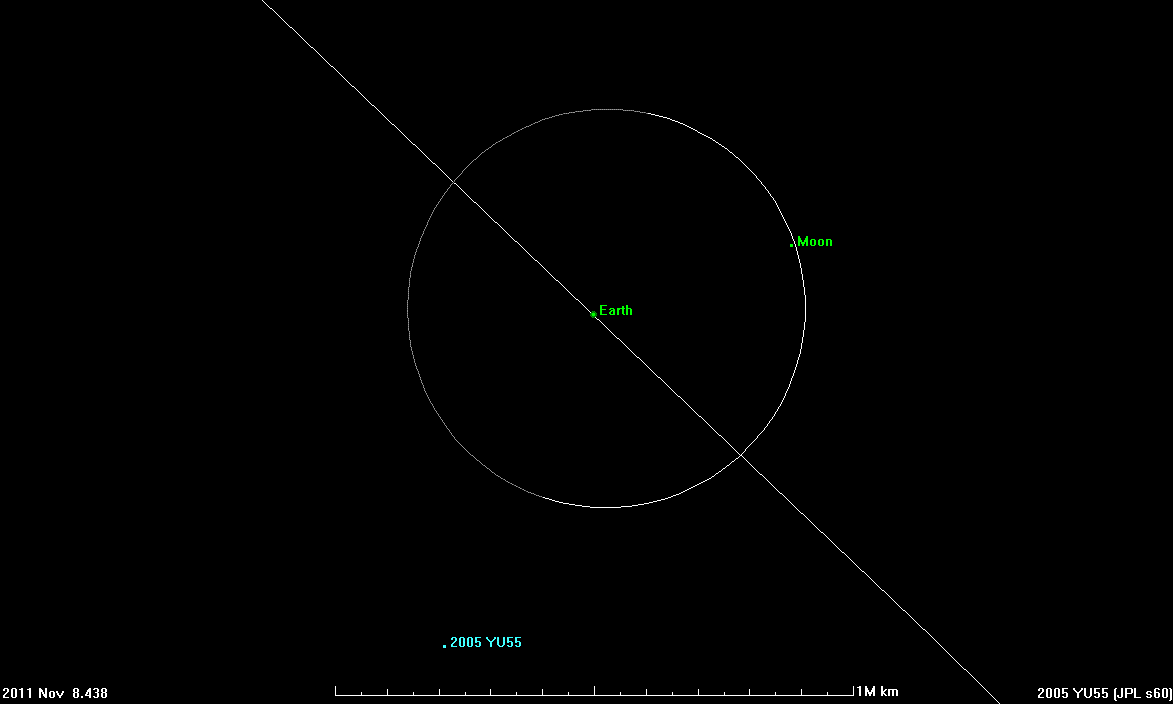Near-Earth asteroid 2005 YU55 was discovered December 28, 2005 by Robert McMillan of the Spacewatch Program near Tucson Arizona. 2005 YU55 has shown to be a very dark, nearly spherical object 400 meters in diameter. Because of its approximate 20-hour rotation period, ideal radar observations should include tracks that are 8 hours or longer on multiple dates at Goldstone (November 3-11) and when the object enters Arecibo's observing window on November 8th.
Using the Goldstone radar operating in a relatively new "chirp" mode, the November 2011 radar opportunity could result in a shape model reconstruction with a resolution of as fine as 4 meters. Several days of high resolution imaging (about 7.5 meters) are also planned at Arecibo. As well as aiding the interpretation of the radar observations, collaborative visual and near infrared observations could define the object's rotation characteristics and provide constraints upon the nature of the object's surface roughness and mineral composition.

Since the asteroid will approach the Earth from the sunward direction, it will be a daylight object until the time of closest approach. The best time for new ground-based optical and infrared observations will be late in the day on November 8, after 21:00 hours UT from the eastern Atlantic and western Africa zone. A few hours after its close Earth approach, it will become generally accessible for optical and near-IR observations but will provide a challenging target because of its rapid motion across the sky.
To the delight of end-of-the-world hysterics, though it has strangely gone unnoticed by Harold Camping or the Comet Elenin crowd, 2005 YU55 is classified as a potentially hazardous object, though it poses no threat of an Earth collision over at least the next 100 years. However, this will be the closest approach to date by an object this large that we know about in advance and an event of this type will not happen again until 2028 when asteroid (153814) 2001 WN5 will pass to within 0.6 lunar distances.






Comments